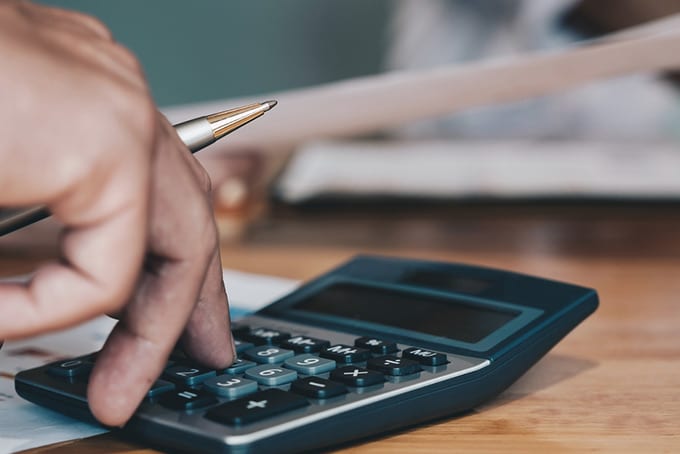
We talk a lot about your credit cards (those pesky pieces of plastic that are equal parts good and bad, depending on how you use them) and your credit score (that three-digit number predicting the likelihood that you’ll pay your credit obligations on time).
But let’s take a moment to discuss your credit utilization. It’s not something many of us often think about, but it’s a very important data point when it comes to your financial health.
Credit Utilization: What Is it?
The name might sound complicated and maybe even a bit daunting. But in short, credit utilization is the amount of available credit you are using. It is a ratio that measures your outstanding credit card balances to your credit card limits.
To calculate your utilization, divide your credit card balance by your credit limit, then multiply by 100. Let’s say you have a $500 balance on a credit card with a $1,000 credit limit – your credit utilization for that card is 50%. In other words, you’re utilizing half of your available credit.
Credit Utilization: Does it Impact My Credit Rating?
While a high credit score means you’re seen as someone who will more like repay all of your bills by their due dates – in other words, a safer bet for lenders – you want to keep a low credit utilization.
The lower the better, in fact. Low credit utilization shows that you only use a small amount of the actual credit that’s been extended to you. And your credit utilization is a big part of your overall credit score.
Your credit score is calculated using the trends from your credit report history. Your credit score is typically based on five factors (each with a different weight or percent of influence). FICO, the most common version of credit scoring, calculates the following percentages:
- Payment history (35%) – do you pay your statements on time?
- Level of debt/credit utilization (30%) – what is your level of debt?
- The age of credit (15%) – how long have you held the credit card?
- Mix of credit (10%) – do you have a variety of account types?
- Credit inquiries (10%) – do you have a lot of credit checks?
Credit Utilization: Why Should I Care?
Having low credit utilization can make it easier to secure additional credit when you need it, such as auto loans, mortgages, and new credit cards with more favorable terms or rewards perks.
Interestingly, the credit utilization for each of your credit cards is scored separately. Then your overall credit utilization is calculated to determine the total of all your credit card balances, compared to your total credit limits.
High utilization in either category can impact your credit score because it could signal to your lenders that you’ve overextended your spending. If you’re looking to get a new loan or open another credit card, you might be rejected for being flagged as an increased risk of delinquency.
Keep in mind that your credit utilization rate is calculated on your revolving credit, typically your credit cards and other lines of credit that “revolve” (or carry over from month to month) with no expiration date. Your ratio doesn’t include installment loans such as your mortgage or car loan, which have an “end date” and get factored into your credit rating in a debt-to-income ratio.
Credit Utilization: Why Shouldn’t I Max Out My Card?
Other than simply making it very difficult to pay off your balance, maxing out a credit card will cause your credit score to plummet. Remember those percentages for the factors in your utilization calculation? Because the second-most important element in your ratio is your level of debt, hitting the limit on a credit card could factor in as a major red flag.
For the purposes of maintaining a lower credit utilization level, it may be better to evenly spread your spending across your multiple credit cards.
The purpose of the credit scoring system is to gauge the likelihood that borrowers will repay the money they owe. Certain factors – like high credit card balances – are typically viewed as reasons that make people more likely to default on credit obligations.
Credit Utilization: How Can I Improve Mine?
The common recommendation is to keep your total credit utilization rate below 30%. There are a few methods that can help improve yours.
The easiest method is to cut your spending, but that’s often easier said than done! Another great way is to pay your credit card balances in full every month. Keeping your balances at zero – or as low as possible – will help your ratio. Then, once you get to a zero balance, don’t close out that card: Keep the account open (even if you never use it again!) to boost your amount of available credit. Another way is to request a credit limit increase on a card in good standing, which again increases the total amount available for your use.

One last note: If you’re not checking your credit report regularly, you’re doing yourself a huge disservice. It’s quick, it’s easy, and it’s free. The best place to get your free reports is annualcreditreport.com. Your bank or credit card company might also offer a complimentary credit report service. There are other services out there, but be aware that some “free” reports come with strings attached, like requiring you to sign up for credit monitoring. So read the fine print – and be wary if they offer a “trial subscription” or require payment information!
Have other questions about credit utilization? Need more advice about how to maximize yours? Contact the advisors at American Credit Foundation to discuss workable ways that you can implement steps toward improving your credit utilization, your credit score, and your overall financial stability.